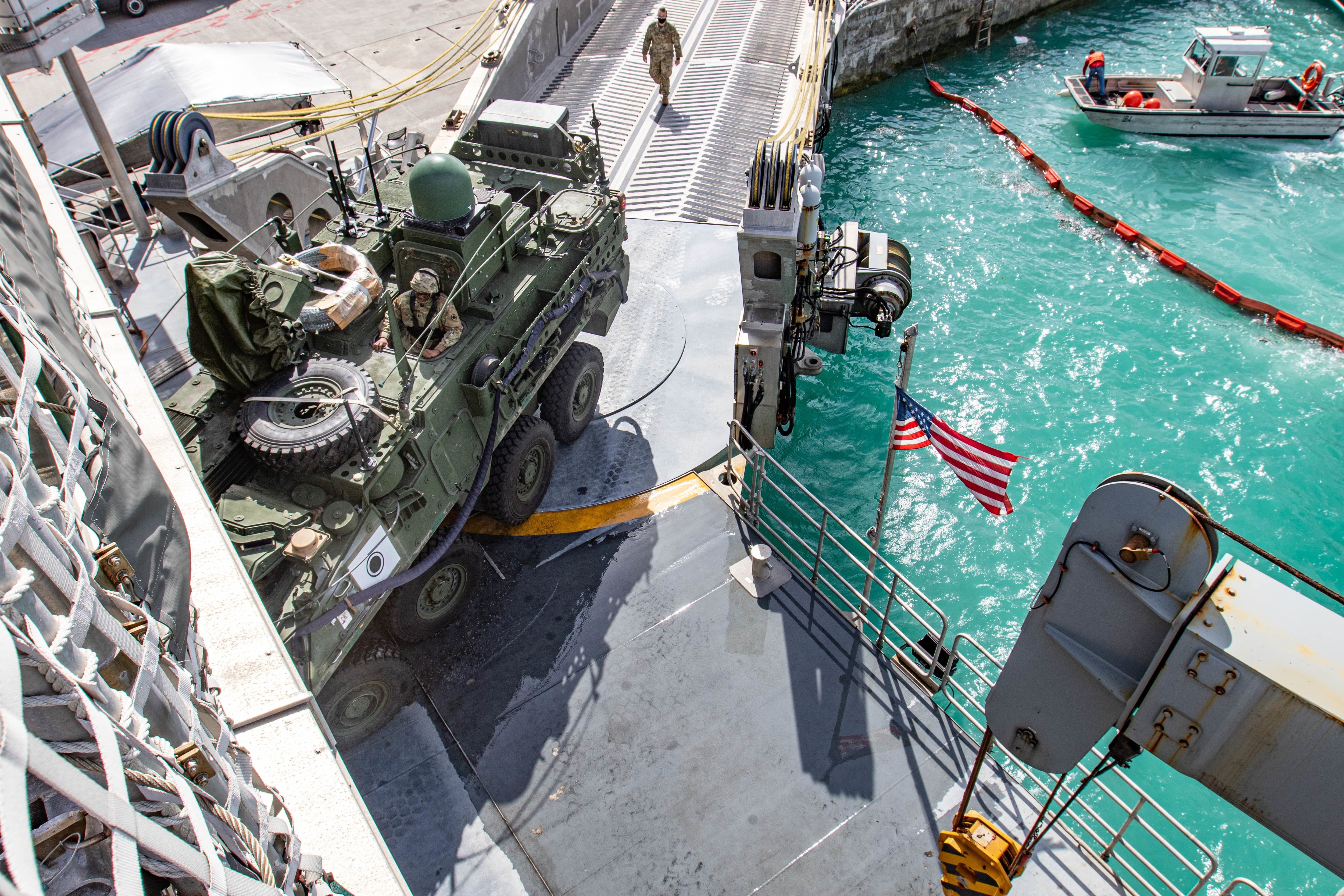WASHINGTON — The U.S. Army is interested in using airborne assets to extend lines of communication across the vast Indo-Pacific region, where watery expanses, thick foliage and technologically advanced adversaries can hamstring connectivity.
Experimentation with the so-called aerial tier is happening at Project Convergence, the service’s large-scale test of technologies meant to advance the Pentagon’s Joint All-Domain Command and Control philosophy. That effort is meant to “extend the network and really get it distributed further so” troops in the region can talk at greater distances, according to Maj. Gen. Jeth Rey, the director of the Army’s Network Cross-Functional Team.
“Distributed comms, distributed command and control — we like that part of it,” Rey told reporters Oct. 10 on the sidelines of the Association of the U.S. Army’s annual convention.
Aerial-tier networking boosts connectivity by using airborne systems, such as drones, to bridge large distances or circumvent signal-impeding obstacles, like mountains and buildings. Unlike satellites, which can be slow to deploy and can be jammed or destroyed, aerial-tier gear can deploy quickly overhead when and where soldiers need it, providing a critical link to friendly forces, whether that’s on an island next door or in a neighborhood down the road.
The Army is investing in the aerial tier as the Pentagon postures itself for larger-scale conflicts with China and Russia — the sort of fights that spread out troops and demand speedy reactions. This year’s Project Convergence will feature European and Indo-Pacific scenarios.
RELATED

Rey’s comments come as the Army’s I Corps — a headquarters that manages more than 44,000 soldiers stationed at Joint Base Lewis-McChord in Washington state and across the Pacific, including in Hawaii and Alaska — tinkers with a concept known as distributed command and control.
The distributed approach means smaller, harder-to-detect teams would be sprinkled across the Indo-Pacific landscape. Lt. Gen. Xavier Brunson, the commander of I Corps, on Monday said the key is to “continue to get smaller and do more with less people so that we can be in different locations, so that we are resilient.”
I Corps earlier this year dispatched Stryker combat vehicles and more than a dozen personnel to Guam to test integration with Navy systems and see how units with obfuscated footprints would fare in a region often considered the kingdom of air and sea.
Brunson on Monday said the experimentation was a success, and that “our next big steps are continuing” at a larger scale. The Strykers, he added, were a great tool to have on hand.
“They were very capable,” he said. “We had access to Link 16 in those vehicles. We could use 5G. We were using antennas off of planes from those vehicles.”
Colin Demarest was a reporter at C4ISRNET, where he covered military networks, cyber and IT. Colin had previously covered the Department of Energy and its National Nuclear Security Administration — namely Cold War cleanup and nuclear weapons development — for a daily newspaper in South Carolina. Colin is also an award-winning photographer.




